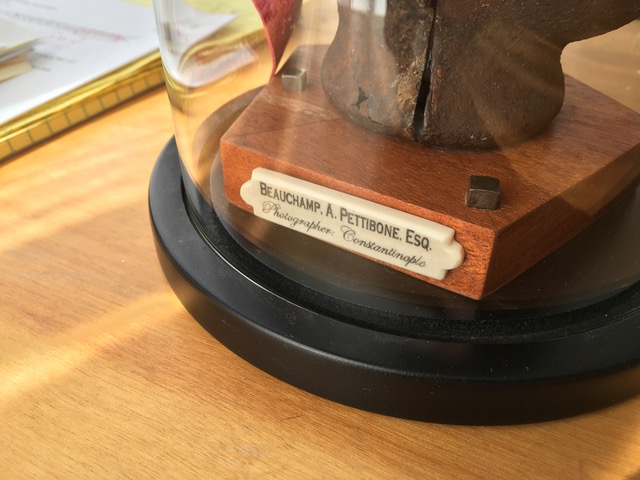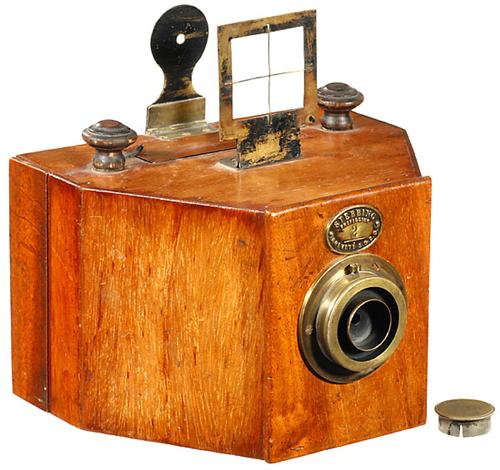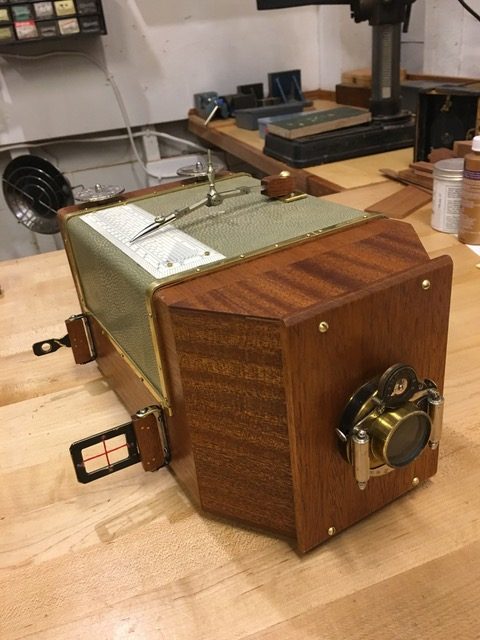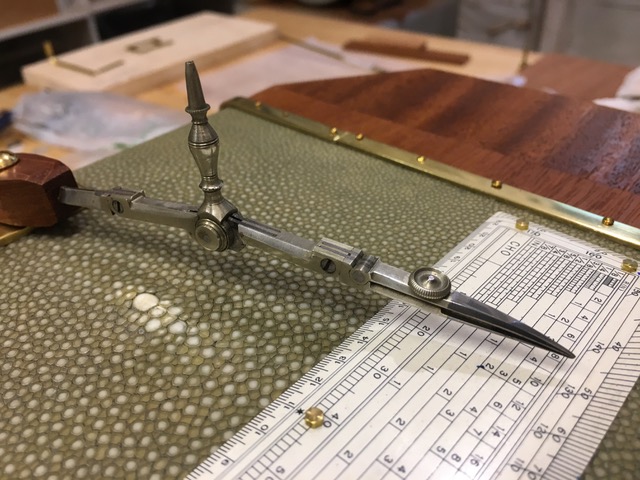Paul reached out to me with part of an interesting project he’s in the middle of: making cameras. These are late 18th century cameras, replica Victorian cameras as if from aproximately 1893. After sending me some pictures of his work and his want of some intricate scrimshaw, we conversed via email and worked out what he was envisioning. Thankfully, the graphic artist knew the fonts she had used for the cards he had printed – also using similar techniques for that period, and I was able to reproduce them on a piece of galalith. Being in California, any type of ivory is out of the question, but galalith was also from that period and being used for everything from an ivory alternative for hairbrushes and other sundry items to musical instruments, steering wheels and decorations for some of the first Ford cars. He was gracious enough to allow me some freedom on the design, the result is in the pictures below. This is part of a larger art installation he is working on, which I will elaborate on if he allows. It’s a fascinating idea that he is pouring his creative talents into with wonderful results. I’d have to say he is an excellent craftsman as well, and I look forward to seeing his final results. (continued…)




Intrigued? It’s a fascinating project and history lesson, story and adventure all in one! Find out more by visiting his site at http://www.c-clampstudios.com/